The Canon Regulars
The Holy Spirit chose these men who dared to dream
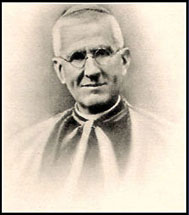
MONSG. BERNARD BURQUIER (1932 - 1943)
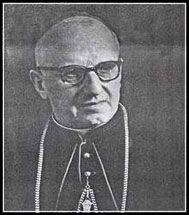
MONSG. LOUIS SEVERIN HALLER (1943 - 1970)
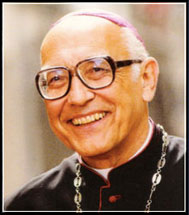
MONSG. HENRI SALINA (1970 - 1999)
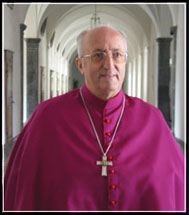
MONSG. JOSEPH RODUIT (1999 -)
And they delegated these Heroes to fulfill the dream.

FR. ANDRE BUTTY
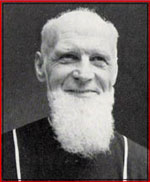
FR. AUGUSTE SCHYRR
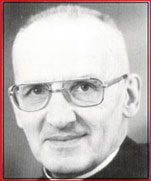
FR. AURELIO GIANORA
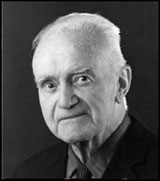
FR. PAUL THURLER
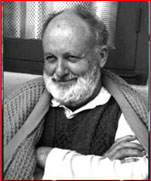
FR. EMMANUAL GEX COLLET
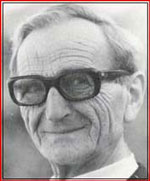
FR. GUSTAVE ROUILLER
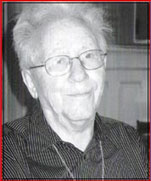
FR. HUBERT RUCKSTUHL
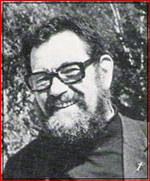
FR. JEAN MARIE BRAHIER
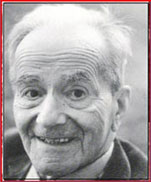
FR. JOHN ROGER FOX
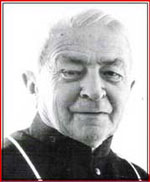
FR. MARTIN REY
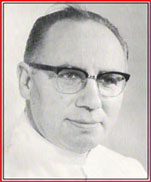
FR. MEINRAD PITTET
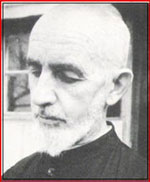
FR. ROBERT EIGENMANN
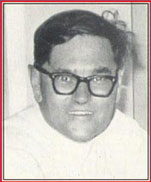
FR. PATRICE VERGERES
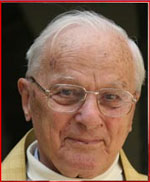
FR. J. HOFSTETTER

FR. SIMONE VERMONT

FR. E. GRESSOT
THE MINISTRY OF THE CANON REGULARS OF ST. MAURICE SIKKIM APOSTOLIC PREFECTURE (1934 – 1962)
Msgr. Marietan, the Abbot of the Canon Regulars of St. Maurice Abbey, Switzerland on receiving an appeal from His Holiness Pope Pius XI, wished to do something for the Mission. With this intention, he went to France to meet Archbishop De Guebriant, the then Superior General of the Foreign Mission Society of Paris. Being very pleased with the offer of the Abbot, Msgr. De Guebriant suggested that he send a few Canon Regulars (CR) to help the MEP Fathers at St. Joseph's College, Bangalore (South India). St. Joseph’s was a school run by the Foreign Mission Society. A first batch of CRs left for Bangalore in Jan. 1930 and a few more followed. One amongst them was Fr. A. Schyrr who arrived in Oct. 1932.
Msgr. Burquier, the new Abbot of St. Maurice went to Paris. There Msgr. De Guebriant unfolded before him the immense map of the forty-two dioceses under the care of the MEP Fathers (Foreign Mission Society of Paris). Pointing at the Sikkim Apostolic Prefecture on the map of India, he told the Abbot: "That is the very place for you Swiss people. Go and have a look at it and see for yourself what you can make of it".
In Oct. 1933, Msgr. Burquier left for India taking with him an English-speaking monk Fr. John Roger Fox CR, as a companion. Traveling by sea they reached Madras on 2/11/33 and from there by train a day later to St. Joseph's College, Bangalore. After a break of two weeks they continued their journey up to Calcutta where they met Msgr. Perier and from there they proceeded to Kalimpong and Pedong. Msgr. Douenel welcomed them at Siliguri.
THE STUDY OF THE PLACE.
On reaching Kalimpong and Pedong towards the end of Nov. 1933 the Abbot tried to familiarize himself with the place and its surroundings. He found the geographical features of the area were very akin to that of Switzerland. Both were mountainous regions with high snow-clad peaks, a cool but pleasant climate very salubrious to health. The place was indeed very ideal for his monks who lived in the Alpine Mountains. It would not be too hard for them to get themselves acclimatized. But more than the grandeur of the mountains, the simplicity and innocence of the people were more appealing and worthy of receiving the message of Christ. They would be able to preach to them and transform their lives. A fair number of Christians were already there with churches, schools, orphanages. These provided enough work for a dozen of priests.
DECISION TO TAKE UP THE MISSION WORK.
Returning to St. Maurice on 18/12/1933, the Abbot and his Council decided after a good deal of deliberations with all involved that they should take up the Mission work and give a helping hand to the Missionaries of the Foreign Mission Society (MEP Fathers). An agreement was reached between the Foreign Mission Society of Paris and the Canon Regulars of St. Maurice in May 1934. The first agreement was to help the French Missionaries in the pastoral work in the Region of Kalimpong under the Sikkim Prefecture. Fr. Aurelius Gianora and Fr. John Roger Fox were sent to India on 15/10/34. They reached first Calcutta and then Kalimpong on 17/12/34.
THE BEGINNING OF THEIR MISSION WORK.
In 1935 they were taken to Pedong by Msgr. Jules Douenel. They stayed there helping the French Fathers, learning the language and culture of the people and acquiring Missionary experiences. They were soon followed by two other Canon Regulars priests: Fr. A. Schyrr and Fr. Martin Rey in Dec.1935. They were sent to Pedong to help Fr. John Roger Fox and Fr. A. Gianora and to learn the language. They lived together as one community at Pedong till they got their individual assignments. In 1936 Fr. Martin Rey was sent to Maria Busty to help Fr. Benjamin Stolke.
THE RESPONSIBILITY OF THE UNIVERSAL CHURCH.
The appeal of Pope Pius Xl had brought the Canon Regulars of St. Maurice to offer their service to the Mission and help out those old French Missionaries. The Universal Church had to take a decision as to who should ultimately run the Mission in the present situation. After due deliberations and consultations an agreement was reached and the Foreign Mission Society of Paris agreed to hand over the Mission of Sikkim to the Canon Regulars, the monks of St. Maurice Abbey, Switzerland. On 30th June 1937, the old French Fathers who had been working there for the last forty-five years handed over the Prefecture Apostolic with a heavy heart and tears to Msgr. Gianora who had been elected as the new Prefect Apostolic on 14th May 1937.
AN UPHILL TASK.
The responsibility of the Mission was a very onerous one for a young man of just twenty-nine years and someone who was only into his fourth year in the priesthood. But the need of the Mission was so great that an exception had to be made. Since Msgr. Gianora was a man of great caliber, he would be able to run the Mission it was hoped. For that it needed the setting up of a new administrative arrangement, restructuring of the organizational frame-work, proper assignments of the manpower at hand, regular evaluation and assessment of the ministries undertaken and other necessary adjustments.
In the first place it was necessary for Msgr. Gianora to know the state of the whole Mission. The juridical area to be covered was large and extensive. It comprised of the whole State of Sikkim and the sub-division of Kalimpong. Sikkim had an area of 7295 sq. kms and Kalimpong 1067 sq. kms, altogether an area exceeding 8000sq.kms. But Sikkim being still a ‘Forbidden Land’ did not have a Mission or a single Catholic yet. The population of Sikkim was 1,10,000 and of Kalimpong 68,200. But the total Catholic population of the Mission was 969 only.
THE MINISTRY OF THE PREFECTURE UNDER THE CANON REGULARS.
A restructuring had to begin with new assignments, a proper distribution of the man-power according to the capabilities of each. Soon after taking over the Mission he assigned ministries to each priest. He had to reshuffle the earlier assignments and give new ones to all of them. He first brought back Fr. A. Schyrr from Maria Busty and appointed him the Vice-Prefect of the Mission on 5th July 1937. He had to take charge of the orphanage as Msgr. Gianora himself had to move to Kalimpong to assume the responsibility of the Prefect Apostolic. The financial need being great Msgr. Gianora had to send Fr. J. R. Fox to England to collect funds for the Mission. It was only after taking over the Mission did the Prefect became aware of the precarious financial situation.
HINDRANCE TO THE WORK OF EVANGELIZATION.
As the Missionaries tried to bring more people to faith they were confronted with several types of religions in practice. As regards their religious belief the populace was either Hindus or Buddhists or Animists. Almost all of them believed in ghosts and spirits. They had several other superstitious beliefs also. Sorcery was common. They were holding on to their ancient beliefs and not willing to change. It was a great hindrance to the work of evangelization.
Socially they were oppressed, neglected. They had no power and position and they were exploited by their own people including their own leaders and teachers. The Missionaries had to see to all these problems and start doing something about them.
In the mean time the arrival of Fr. Andreas Butty in the month of April made Msgr. Gianora very happy. The addition of a young missionary of just 35 years to his team indeed made his task much lighter. Fr. A. Butty was a teacher and had some knowledge of English. He had been an Inspector of Schools and the youth in-charge before coming to the Mission. He was immediately sent to Pedong to help Fr. A. Schyrr in the orphanage which was built in 1901 and was now in a very dilapidated state.
But the eyes of Fr. A. Butty was focused on Tibet, the place where the French Missionaries were denied entry but were always longing to set foot on. Tibet was indeed a forbidden land to the Missionaries. Taking Mr. Chintu Rai of Pedong and Denis Molomoo of Kalimpong with him and two mules with drivers for carrying their luggage, Fr. A. Butty went stopping at Dak Bunglows as far as Pharizong and returned in the month of June.
The accounts of their journey are found in their individual files.
After his return from Tibet Msgr. Gianora left for Switzerland to meet the Abbot and to discuss with him the problems and needs of the Mission. He needed the necessary guidance to plan a strategy. He also needed financial help . The Mission work was not at all easy for the Canon Regulars in the beginning.
SECOND WORLD WAR AND AFTERMATH.
There were both serious internal and external problems beyond their control. Soon after taking over the Mission, the Second World War broke out in Europe. It created a new situation both in Europe and in the Mission. Several countries were involved in the war both in the East and the West. India being a part of British Empire too got sucked into the conflict. Msgr. Gianora himself got held up in his country and could not return to the Mission immediately The Missionaries were at a loss a regards the manner in which they should go about the Mission work. They faced lots of hardships including difficulties of a financial nature.
CONCERN FOR EDUCATION.
Fr. M. Rey being concerned about the education of the growing children reorganized the school by employing some educated local Catholics. Those passing out from the Primary were sent to Pedong Middle school. He also employed Miss Patricia Rai, a lady teacher and a former student of St. Philomena’s School, Kalimpong.
At the end of the year on 3rd Dec. the Prefect Apostolic managed to return to the Mission with Fr. Jean Mary Brahier, apparently by land-route through the Middle East. It was a great relief for everybody in the Mission. Even during his absence, in spite of war and the problems caused by it there had been significant progress in the activities of the Mission, mainly due to the hard work, courage and optimism of the Missionaries under the able guidance of Fr. A. Schyrr, the Vice-Prefect.
Towards the end of the year Msgr. Burquier, the Abbot sent Fr. Robert Eigenmann and Fr. Patrick Vergers to reinforce the Mission. Their job was to revitalize the already existing Missions, restructuring and supporting them with the necessary infra-structure and other inputs.
During the war time and in the absence of the Prefect, the Mission faced lot of administrative difficulties. Fr. A. Schyrr, the Vice-Prefect had to pay more attention to the Centre, i.e. the seat of the Prefecture. Fr. JR Fox had to be brought to Kalimpong from Maria Busty to serve as the Chaplain of St. Joseph’s Convent. Fr. G. Rouiller from Gitdabling to assist Fr. Peter Ranger in Kalimpong. Fr. Patrick Vergers was sent to Gitdabling to assist Fr. P. Thurler and Fr. Robert Eigenmann was sent to Maria Busty to help Fr. M. Rey and also learn Nepali for a few months. Fr. Benjamin Stolke also had to come to Kalimpong from Gangtok. Fr. A Schyrr took over the charges as the Headmaster of Pedong School. Fr. A. Butty was appointed in-charge of the orphanage. He stared a cattle farm to support the orphanage. All the same Msgr. Gianora saw the necessity of expansion and changes in the Mission for further
progress. This period of war needed new visions and initiatives towards strengthening the Mission work. In the first place he assigned a ministry to Fr. M. Brahier by sending him to Pedong in the month of January and to Maria Busty in the month of May to learn Nepali. In the month of July he was sent to Gitdabling to help Fr. P. Vergeres. He brought Fr. P. Thurler from Gitdabling to be the Chaplain of St. Joseph’s Convent in the place of Fr. J. R. Fox and to assist Fr. G. Rouiller who was appointed as the Parish Priest of St. Teresa’s on first July 1941.
Fr. Peter Ranger often passed through Algarah a small market to and fro Gorubathan. His frequent contact with the people there and also the fact that his eldest brother had a cottage in the bazaar gave him an opportunity to make an opening at Algarah Bazar. Making good use of such providential arrangements he started a small station in one of the rooms of his brother’s house.
Fr. J. M. Brahier received another transfer from Git to Maria Busty but this time as an assistant to Fr. Martin Rey. While looking after the Lepchas of Changsing he saw the plight of these simple folk who faced famines and were unable to save paddy seeds for sowing in their lands when the planting season arrived. Fr. J. M. Brahier then hit upon this idea of starting a Cooperative for the collection and distribution of paddy seeds. But the farmers who were given seeds for sowing used the same for their next meal and were unable to repay as there was no production. The Cooperative failed. The Lepchas indeed needed an economic system but being illiterate they had not understood the concept of a Cooperative.
The Second World War was engulfing the whole world and even the East was not immune. Japan joined hands with Adolf Hitler and as a member of the Axis invaded territories in the East. She started attacking Burma, Assam by ground force and artillery and began bombarding, the naval and air bases. After attacking the air base of the US at Pearl Harbor and destroying the Queen Elizabeth naval ship by a suicide aircraft she started bombing Dumdum Airport in Calcutta. Because of such developments the life of the nation was fully paralyzed and came to a stand-still. The fear of further attacks had gripped the people of Bengal, particularly those in Calcutta. A total black-out was clamped. The people fled to safer places and educational institutions were shut. The Catholic parents not knowing what to do about the schooling of their children sought the help of Fr. Benjamin Stolke whose relatives were living in Calcutta.
GENESIS OF ST. AUGUSTINE’S SCHOOL.
Rev. Fr. B. Stolke out of concern for these children displaced by the fear of war began an initiative to educate them. These coaching classes that were meant especially for the Catholic children taking shelter in Kalimpong were organized in some rooms of the Presbytery with the consent of the Prefect Apostolic. He was assisted by Fr. Paul Thurler the then chaplain of St. Joseph’s Convent. These humble coaching camps initiated by Fr. B. Stolke and Fr. Paul Thurler later grew into formal classes. This eventually lead to the establishment of the popular St. Augustine’s School (SAS) of Kalimpong.
We can thus safely consider the duo of Fr. B. Stolke and Fr. Paul Thurler as being the founders of St. Augustine's School, Kalimpong.
Msgr. Gianora even in the midst of war tried to continue the expansion of the Mission by intensifying its activities and bringing more Missionaries from St. Maurice to man the new stations and institutions of the Prefecture covering a large area of Kalimpong Sub-division. These extended beyond the Relli River, touched the plains of Bagrakote, Chelle River, Patthar Jhora, Ambiok and Jaldhaka ending at the border with Bhutan. A shortage of Missionaries prompted Msgr. Gianora himself to take up the Parish work and also look after the schools wherever necessary. He even started teaching in Pedong School where there were 100 pupils. To do this he walked all the way from Kalimpong every morning.
In Kalimpong Msgr. Gianora was pleased to acquire some 45 acres of land adjacent to other Mission land from Mr. Santosh Singh Bhutia. The acquisition of sufficient land provided Msgr. Gianora with further opportunities to expand the reach of the Mission. He planned on opening a Monastery for his Order and starting a High School for the boys. Due to some reason or the other the plan to start the Monastery did not see the light of day.
THE END OF THE SECOND WORLD WAR.
The dropping of the atomic bombs on Hiroshima and Nagasaki in August of 19 dealt a death blow to the Axis powers and hastened the end of the Second World War.
But the effects of the wars were disastrous especially for Japan where millions of people died and the economy of the country was in shambles. The War indeed was a total disaster inflicted upon humanity. Many nations were wiped off from the face of the earth and national boundaries re-drawn. The death toll was very high and the cost of war in economic terms staggering and beyond estimate. All the essential goods were either not available or had become scarce. The price of all essential goods and commodities soared and took a long time to stabilize. But in spite of all that, humanity wanted to start all over again and still aspired to live in peace.
The Missionaries too had undergone tremendous hardships and privations during the time of the war. They had also worked hard and needed a break.
Fr. A. Schyrr, the Vice-Prefect had been at the helm of affairs during the absence of the Prefect for more than a year. He had to shoulder the responsibility of looking after the whole Mission besides taking care of the administration of the School. He needed a break that would allow him to go back to his native place and be with his own people.
He had been away from home for more than ten years ever since he came to the Mission in 1935. He left the charge of the School and the Parish in the hands of Fr. Leonard Molomoo who had just been ordained.
The Prefect Apostolic concentrated more on the development of the Mission.
He fully took over the school and in 1945 officially named it St. Augustine, after the founder of his Order. The new Presbytery which was just constructed was used as a provisional building to house the school till suitable arrangements were made. Fr. G. Rouiller constructed an attic on the top to accommodate some 25 boarders. Fr. X. Eberhard who had arrived in April was immediately appointed the Pioneer Principal of the School
THE FIRST VISIT OF MSGR. LOUIS SEVERIN HALLER.
Because of his concern and interest for the Mission undertaken by his Order, Msgr. Haller the new Abbot made his first visit to the Mission on 28th Dec 1946. It was an eventful and historic moment for the Canon Regulars and the whole Prefecture. All the decisions taken by him would determine the future of the whole Mission. To make such a long trip taking several days, all the way from the real Switzerland to what could be called the Switzerland of the East, needed tremendous fortitude and spoke volumes about the love that he had for the Mission in this part of the world. The Canon Regulars were very happy to have their Abbot in their midst listening to their sad and joyful experiences. They were indeed elated and gratified to share their dreams and aspirations with the highest authority in their organization. The future of the Mission and the life of each individual Missionary rested much on the assessment and observation he made as he listened intently to the fears and concerns and hopes of each Missionary. This exchange helped him get a first hand knowledge of their needs, problems and difficulties.
THE POST - INDEPENDENCE ACTIVITIES.
After the Independence of India, the Missionary activities also multiplied and intensified. The Missionaries felt that they too had some responsibility in contributing towards the nation building work that was now undergoing in full swing. During the war all the progressive work had come to a stand- still. The country needed to develop swiftly in practically every field. Although the actual fighting was over, the effects of the war lingered. There was still a scarcity of many essential commodities. The price rise of all essential goods continued unabated. The Prefect and his Missionaries wondered which problems should be tackled first and by what means. They themselves being affected by the war had no resource to begin any new ministry or to take up humanitarian projects. They had to give priority to the spiritual need of the people. Knowing the need of the Mission Msgr. Haller the Abbot sent more Missionaries towards the end of the year in the persons of Frs. Emmanuel Gex Collet, Edward Gressot, Minrad Pittet and Simon Vermot.
Msgr. A. Gianora and Fr. R. Eberhard welcomed them at Siliguri and brought them Home
Msgr. Gianora assigned ministries to the new arrivals. Fr. Minrad Pittet was appointed an assistant to Fr. J. M. Brahier in Gitdabling. Fr. Gex Collet was made an assistant to Fr. Brahier and Fr. M. Pittet. Fr. Edward Gressot was appointed an assistant to Fr. M. Rey in Maria Busty. Fr. Simon Vermot was sent to Shillong to learn English, Maths and Bengali and to also take up duties as the Chaplain of the Christian Brothers. In Kalimpong Msgr. Gianora appointed Fr. Albert Lee, a Diocesan priest, as an assistant to Fr. Eberhard in St. Augustine’s School. Fr. A Butty moved to the new property and expanded his Farm with the senior orphans of Pedong. They settled in mud-houses with thatched roofs made of bamboos and other local materials. Fr. A. Butty was also appointed as the chaplain of St. Joseph’s Convent. Fr. E. Gresssot was given the added responsibility as a teacher of St. Augustine’ School. By the end of the year two more Missionaries, Fr. Joseph Hofstetter and Bro. Peter Grobety arrived on 13th Nov.1948. Fr. J. Hofstetter was sent to Todey to help Fr. R. Eigenmann. Bro. P. Grobety was given the charge of the House. He helped both in the Parish and the school.
Fr. Simon Vermot after his return from Shillong was appointed a teacher of St. Augustine’s School. Fr. R. Eberhard was sent to Ranchi to learn Hindi. Learning the main Indian languages were essential for the smooth running of the School.
The new St. Teresa’s Church was blessed on 29th January 1952. The Church modeled in the style of a Buddhist monastery was made mostly of good timber . Tibetan arts too were featured in this new church. The carvings were done by Bidur Lama a resident of Bong Busty in Kalimpong. Fr. P. Vergeres built the Parish Hall which was also used by St. Augustine’s School. Fr. R. Eigenmann from Today went to Switzerland for a break and in his place Fr. J. Hofstetter was appointed the Parish Priest. Fr. Simon Vermot was appointed assistant to Fr. Gex Collet in Maria Busty. Fr. Gex Collet built a school at Lingsey and started another one in Duka. Fr. E. Gressot was appointed the priest-in-charge of Algarah Mirik. He constructed a chapel and a school at Sanduk in the land offered by the new Christians and got them blessed on 4th June 1951. In Pedong the newly constructed storey of St. George’s School was blessed on 12th Nov. 1951. Fr. A. Schyrr upgraded St. George’s from Middle School to a High School and succeeded in getting it recognized by the government.
Fr. J. Hofstetter was appointed as it’s Vice-Principal and teacher.
All this time the pupils of St. Augustine’s School grew in knowledge and wisdom besides learning the discipline from strict but kind monks.
Mr. Tej Ratna Man Tuladhar become the first student of the School to pass the Senior Cambridge Examination in the year 1952. This he did with distinction. It was a big achievement not only for Tej but for the school as a whole. His astounding success in the examination was indeed a reflection of the quality and the standard of the School. The credit also went to the staff and the Management. It was a remarkable beginning for the school.
On 18th March 1953 Fr. Herbert Ruckstuhl arrived in the Mission. He was sent to Pedong to learn Nepali. Fr. Simon Vermot was appointed assistant to Fr. M. Pittet, the Chaplain of the Convent and the Novice Master Bro. Victor Khawas came to Gitdabling to begin his novitiate. In 1955 Fr. H. Ruckstuhl was sent to Christian Brothers’ College to learn English from the Irish Brothers. On his return Fr. H. Ruckstuhl was appointed the teacher of St. Augustine’s School and the Bursar of the Mission and the School. Bro. Peter Grobety left the Mission for good.
THE ESTABLISHMENT OF SAMTHAR COOP. SOCIETY.
At Suruk and Tanyang both Fr. G. Rouiller and Fr. Jean Marie Brahier jointly started a multi-purpose co-op. society for the economic upliftment of the Lepchas irrespective of their creeds. The co-operative helped the oppressed and exploited tribal of the whole region from the clutches of money lenders and middle-men. It gave them an opportunity to become financially independent and begin life anew.
THE CONTRIBUTIONS OF THE SWISS WELFARE DIARY.
In Kalimpong, the Swiss Dairy reached the peak of its glory with its products gaining national prestige. The Dairy Farm served the Mission and Institution. Many people could make a living out of it. Housing Schemes for the laborers of the Farm were started. An initiative to impart non formal education was started to school illiterate women who had previously never had the chance to go to schools.
CREATION OF DARJEELING DIOCESE.
The Apostolic Vice Nuncio came to Kalimpong to meet Msgr. Gianora to confer about the creation of Darjeeling Diocese. Earlier the Prefect had made his recommendation in view of the growing problems in the country and the Mission, especially after the Independence. This had mainly to do with the restrictions imposed on the Missionaries and on foreign aid. In 1962. Fr. Patrick Vergeres was appointed the Superior of the Canon Regulars. But he soon left for treatment to Switzerland.
After due deliberation and with the approval and consent of all concerned the Holy See created the Diocese of Darjeeling on 8th August 1962 out of a part of Calcutta Archdiocese and the Apostolic Prefecture of Kalimpong and Sikkim. M gr. Eric Benjamin, the Domestic Prelate of Calcutta Archdiocese, stationed in Darjeeling was nominated the Bishop of the new Diocese. He was consecrated on 7th Oct.1962 at Valetta, Malta and installed on 25th Nov.1962 in Darjeeling. It was an epoch making event for the Church of Darjeeling Hills and the Plains of Terai region.
Msgr. Louis Severin Haller, the Abbot of St. Maurice Abbey was present at the installation ceremony. Many other Church dignitaries were also present to take part in the ceremony.
AGREEMENTS ON THE ROLE OF THE CANON REGULARS.
Msgr. Louis Severin Haller had also come to discuss with the Bishop, the future of the Canon Regulars as regards their role in the new set up of the Mission.
In the new agreements made the Canon Regulars would continue their Mission work as usual in the Kalimpong sub-division and the State of Sikkim. They would be guided and directed by their Superior in consultation with the Bishop. The Canon Regulars would have a say in the administration of the Diocese. In case of necessity they would be called upon to take up any ministry entrusted to them by the Diocese. Msgr. A. Gianora the Prefect Apostolic preferred to remain in the Mission as a Spiritual Director of the Cluny Novitiate and assist it in other formative activities.
The Prefecture had to be handed over to the Diocese. Msgr. A. Gianora willingly consented as he himself had proposed the creation of the Diocese. His vision and dream was finally realized. He had felt that the Mission had to be taken care of by the indigenous clergy in view of the scarcity of the Missionaries
Of course the task of handing over the mission was not that easy for Msgr A. Gianora since he himself well new the pain and difficulty of guiding the mission during its formative years. He was supported in his initiatives by his beloved abbots, close confreres and benefactors who too had made immense sacrifices as Kalimpong has been their main mission.
At the end of the year on 12th Dec. Fr. Simon Vermot paid his last visit to his dear Mission. His experience here had not been very encouraging as all his hard work and tears were met with ingratitude and misunderstanding. But although he left the Mission would never forget his inputs.
After handing over the Prefecture to the Diocese the Canon Regulars continued their ministry with the same zeal and ardor getting more involved in the further progress of the Diocese. At St. Augustine’s Fr. Martin Rey was appointed the new Principal and Fr. Edward Gressot becomes the Bursar of the School and was given the charge of the Hostel. Fr. J. Hofstetter was appointed the Headmaster of St. George’s, Pedong. He was also asked to look after Kasyong and Algarah from Pedong. Fr. H. Ruckstuhl was sent to Switzerland to make an appeal to the Swiss for the financial support of the School.
At Shepkhola both Frs. G. Rouiller and Fr. J M Brahier jointly started an Agricultural Project under the Samthar Co-op. Society. It was known as The SAMCO Project (Samthar Agricultural Multi-purpose Coop. Society). The project established an Agricultural Farm. With the help of Swiss Aid they also set up a Dairy Farm, installed a Saw Mill and a Ropeway on a land acquired from the Forest Dept.
In the mean time in Kalimpong, Fr. E. Gressot brought his brother Mr. Philip Gressot, an architect, for preparing a plan for the St. Augustine’s School complex comprising of the School and Hostel Building and the Hall. He was also expected to provide an estimate of the project’s cost. He stayed for three months and left accompanied by Fr. E. Gressot, whose position in the school was taken up by A Schyrr.
In May Fr. H. Ruckstuhl was also appointed as the teacher of St. Augustine’s.
On 20th December 1964, Fr. P. Vergeres, the Superior and the Parish Priest of St. Teresa’s died suddenly due to a brain hemorrhage. He died young at the age of 51. His sudden death came as a great shock. It was indeed a great loss to the Mission and the Parish. His mortal remains was laid in the Priests’ Cemetery, Kalimpong. Fr. Martin Rey was appointed the priest-in-charge of St. Teresa’s. 1965.Fr.E.Gex Collet was appointed the next Parish Priest of St.Teresa’s
1966. Fr. E Gressot was appointed the Principal of St. Augustine’s School; but left for Switzerland to seek funds for the construction of the School. Frs. Gex Collet and Fr. William Miranda were involved in the day to day running of the school, as the Principal and the Hostel in charge respectively. In 1968 Fr. J. Hofstetter was appointed the hostel-in-charge and he left the Parish under the care of Fr. Charles Mukhia.
THE NATURAL CALAMITY OF 1968.
The Mission was struck by a natural disaster when incessant rains for four consecutive days caused land slides that resulted in the destruction of houses, properties, crops, deaths of several people and animal stock. Communication all over was disrupted. The SAMCO Ropey was the only link they had with the outside world.
In 1969 the construction of St. Augustine’s School Complex was begun with the Swiss Aid received by Rev. Fr. E Gressot. Fr. Martin Rey supervised the work while .Fr. H. Ruckstuhl took a break of six months and left for Switzerland. Fr. Martin Rey after having completed the construction of St. Augustine’s School Complex was transferred to Pedong where he took up the task of constructing a new Church at Pedong. He dismantled the old Church and built a new one in the shape of a boat and called it “The Bark of St. Peter”. The church was large enough for the growing community. It was spacious and well ventilated. He even provided electricity to the Church, school and orphanage with a power generator.
Msgr. Salina, the new Abbot of St. Maurice Abbey made his first visit to the Mission on 14th Nov.1970 He visited all the Missions established and run by the Canon Regulars and remained till 7th.Dec 1970. Fr. J. Hofstetter replaced Fr. Gex Collet in the Parish for sometime when he went to Switzerland.
Msgr. Salina made his second visit to the Mission on 23rd Feb. and remained till 27th March.
In Kalimopng Fr. H. Ruckstuhl was appointed as the Superior of the CR, the school Prefect and as Hostel –in-charge. 1975. Fr .E. Gressot left the school and took charge of St. Teresa’s Parish. Fr. J. Hofstetter was appointed the Principal of St. Augustine’s in 1976. Fr. H. Ruckstuhl looked after the Tibetan Refugee who had fled from Tibet in 1959 during Chinese aggression. Some Tibetan boys were even sent to Switzerland.
Msgr. Salina made his third visit to the Mission with Fr. JR. Fox in October and remained till Nov. 1977. Fr. J. M. Brahier was appointed as priest-in-charge of Gaucharan in Sikkim where he had been earlier in 1973. He started looking for land for the future development of the Parish.
THE HANDING OVER OF ST. AUGUSTINE'S SCHOOL TO THE LOCAL ADMINISTRATION.
After having built up the School with great sacrifices of so many people the Canon Regulars handed over St. Augustine’s School to the Diocese. Finally Msgr. A. Gianora, the Ex-Prefect himself left the Mission on 8th Sept. It was a somber moment that demanded serious reflection. Fr. A. Butty, in the mean time returned to his Swiss Welfare Dairy to continue his work there after recuperating from an operation on his leg.
In 1979. Fr. J. Hofstetter was appointed the Parish Priest of St. Teresa’s. Fr. E. Gressot took over as the Parish of Pringtam/Kankebong from Fr. Victor Khawas. He renovated the presbytery at Kankebong built in 1969 and built a new Church there. He looked after the spiritual needs of the Holy Cross Sisters there.
Fr. A. Ruckstuhl also left the Mission for good and Msgr. Salina made his fourth visit on the 4th of Nov.1979.
The year 1978 marked the end of an epoch and heralded the beginning of a new one. The Swiss Fathers handed over charge of the Mission to the Roman Catholic Bishop of Darjeeling.
Fr. George D’Souza (1978-1979) was the first principal of the school under the new dispensation and he saw to it that the school was put on the right track to reach out for the stars.
Fr. Thomas D’Souza (1979-1984) was given the task of consolidating the institution building process. The school achieved tremendous academic and all round success during his watch. Under Fr. Thomas, SAS became the preeminent school of the region.
He was succeeded by Fr. Felix Baretto (1984-1990) who courageously held the fort especially when the political situation in the hills turned uncertain during the eighties.
Fr. Paul D’Souza (1990-1996) took up the charge and made a considerable difference in practically all areas. He added a whole lot of new infrastructure to service the growing needs of the school in the new millennium. The Primary Section of the school building as well as the Bishop Eric Benjamin stadium was some of the significant additions to the school during Fr. Paul’s tenure. Fr. Paul also introduced the ISC (plus XII) classes in the school in 1995 thus making it possible for SAS students to pursue the study of Science at the higher secondary level.
Fr. Samuel Lepcha (1997 – 2000) was handed over the responsibility at the end of 1996. Fr. Samuel inducted the Brass Band in the school. The Band was a great hit and was able to bag the winner’s trophy for seven consecutive years during the Independence Day Celebrations conducted at Mela Ground, Kalimpong. He also introduced the Commerce stream in the ISC.
Fr. Valerian Viegas (2000-2002) held the reins for two years and reinforced focus on academics and discipline.
Fr. Lawrence Monteiro (2002 - 2012) succeeded Fr. Valerian in the year 2002 to continue the legacy of SAS and is the Principal now. His tenure has seen further expansion of the school building a 1500 seater Diamond Jubilee hall that also doubles as a four-court venue for Badminton tournaments. He also built the new office block, relocated the Physics lab and refurbished the Chemistry and the Biology Labs. A play area for the juniors was also constructed below the swimming pool. It was also during the tenure of Fr. Monteiro that the LKG classes were reintroduced in the primary.
Fr. Valerian Viegas (2012 - )
(Courtesy: Rev. Fr. Charles Mukhia from his compilation of the History of the Diocese of Darjeeling and the data collected by Fr. Lawrence Monteiro during his visit to Switzerland in August 2008. Monsg. Joseph Roduit has been instrumental in providing the data along with Father Dominique Gross.)



